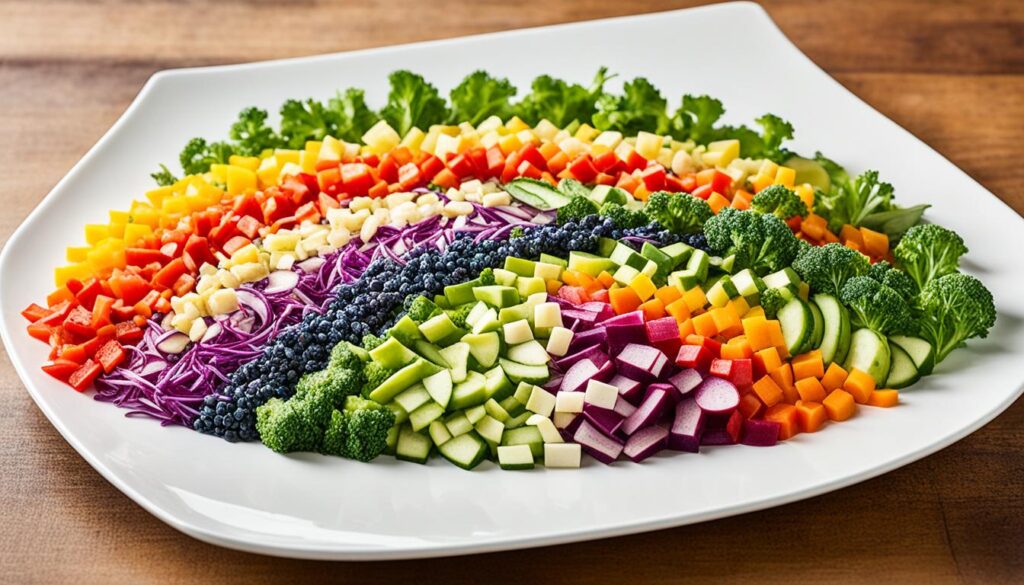Getting kids excited about food and instilling healthy eating habits can be a challenging task, especially in a world filled with processed snacks and sugary drinks. But fear not! We have the solution to turn mealtime into a fun and engaging experience for your little ones.
Discover the most effective strategies and activities that will not only spark your children’s curiosity but also encourage them to try new foods and develop a love for healthy eating. From getting them involved in the kitchen to planning and presenting meals creatively, we have all the tips and tricks you need!
Get Kids Involved in the Kitchen
One effective way to get kids interested in food is by involving them in the kitchen. By giving children the opportunity to participate in the cooking process, they become more invested in what they eat and may be more willing to try new foods. Plus, it’s a great way to spend quality time together as a family.
There are plenty of simple tasks that kids can help with in the kitchen. Here are a few ideas:
- Washing fruits and vegetables
- Tearing lettuce for salads
- Mixing batter for baked goods
- Measuring ingredients
Not only does involving kids in the kitchen make them more interested in food, but it also helps them develop important life skills, such as following instructions, practicing hand-eye coordination, and learning about nutrition.
Another way to make cooking fun for kids is by incorporating kid-friendly recipes into your meal plan. Creative sandwiches with funny faces or fruit kebabs with colorful fruits can make mealtime more enjoyable and enticing. Here’s an example of a fun and easy recipe:
Kid-Friendly Fruit Kebabs
- Ingredients:
- Assorted fruits (e.g., strawberries, grapes, pineapple, melon)
- Wooden skewers
- Optional: yogurt for dipping
- Instructions:
- Wash and prepare the fruits.
- Thread the fruits onto the wooden skewers in any pattern you like.
- Serve the fruit kebabs as a healthy and colorful snack or dessert.
- Optional: Dip the fruit kebabs into yogurt for added flavor.
Encouraging kids to try new foods can be a challenge, but by involving them in the kitchen and offering them kid-friendly recipes, you can make mealtime more exciting and increase their willingness to explore new flavors and textures.
Next, we’ll explore how planning and presenting meals creatively can further engage kids in the world of food.
Plan and Present Meals Creatively
Involving kids in the meal planning process is a fantastic way to get them excited about food. By giving them a sense of control and allowing them to choose a nutritious meal once a week, we can empower them to make healthier eating choices. But meal planning isn’t just about the food itself; it’s also an opportunity to present meals in creative ways that make them more appealing to children.
One idea is to get creative with food presentation. Cutting sandwiches into fun shapes or using cookie cutters to create animal-shaped fruits and vegetables can instantly make mealtime more exciting and enjoyable. Additionally, we can turn mealtime into an adventure by creating themed dinner nights from different parts of the world. For example, we can have a Mexican fiesta with build-your-own tacos or a Japanese-inspired sushi night.
By incorporating elements of play and imagination into meal presentation, we can capture children’s attention and make healthy eating a more enticing experience. Encouraging them to use their creativity to arrange fruits and vegetables on their plate or to come up with funny faces using various ingredients can make mealtime more interactive and engaging.

This image shows an example of creative food presentation—a colorful and playful plate of fruit shaped like a smiley face. This type of presentation can make healthy eating more visually appealing and intriguing for kids.
Furthermore, involving children in the meal planning and presentation process can also help develop their appreciation for different flavors and cuisines. By inviting them to explore new recipes, tastes, and cultural traditions, we can expand their culinary horizons and encourage them to be more adventurous with their food choices.
“By incorporating elements of play and imagination into meal presentation, we can capture children’s attention and make healthy eating a more enticing experience.”
Here’s a table that showcases some creative food presentation ideas:
| Idea | Description |
|---|---|
| Animal-themed Bento Boxes | Create cute animal characters using a variety of ingredients. Use rice balls for the body, fruits and vegetables for facial features, and pretzels for limbs. |
| Rainbow Parfaits | Layer different colored fruits and yogurt in clear glasses to create a vibrant and visually appealing dessert. |
| Fruit Kebabs | Thread colorful fruits onto skewers, creating a fun and interactive way to enjoy a variety of flavors. |
| Vegetable Pancake Art | Create pancake batter mixed with finely chopped vegetables. Use squeeze bottles to draw shapes or patterns with the batter on a hot griddle. |
By incorporating these creative food presentation ideas into our meal planning, we can make healthy eating a fun and visually stimulating experience for children.
Engage in Food-related Activities
Engaging in food-related activities is a wonderful way to educate children about where their food comes from and foster a deep appreciation for the process of growing and harvesting. Gardening, in particular, provides a hands-on experience that allows kids to witness the magic of plants sprouting, blooming, and bearing delicious fruits and vegetables. By actively participating in the gardening process, children not only develop a connection with nature but also gain a sense of pride and accomplishment as they harvest their own homegrown produce.
Another captivating way to promote learning about food is through field trips to farms, pumpkin patches, or local farmer’s markets. These excursions expose children to a wide variety of colorful fruits and vegetables, encouraging curiosity and an adventurous spirit when it comes to trying new flavors. Whether it’s picking apples straight from the orchard or selecting the perfect pumpkin for carving, these field trips create lasting memories while instilling a deeper understanding of the food we consume.
In addition to gardening and field trips, incorporating games and activities that involve food can make the learning experience thoroughly enjoyable for kids. Engaging in sensory challenges, like blindfolded tasting tests, can enhance their appreciation for different flavors and textures while making the educational process entertaining. Drawing their own placemats and creating vibrant food-themed artwork can further stimulate their creativity and reinforce the importance of nourishing, wholesome meals.
Image depicting children gardening. Alt attribute: gardening with kids.
The combination of hands-on experiences, immersive field trips, and interactive activities helps children develop a holistic understanding of food, nutrition, and the journey from seed to plate. By engaging in food-related activities, we can cultivate a lifelong curiosity and appreciation for the vital role food plays in our lives.
Foster Independence and Exploration
Encouraging independence and exploration in the kitchen is a wonderful way to help children develop a positive relationship with food. By teaching them basic cooking skills, like selecting ingredients and following recipes, we can empower them to make their own nutritious meals. Cooking together not only provides a chance to bond but also creates an opportunity to discuss the origins of ingredients, different cooking techniques, and the importance of a balanced diet.
When we involve children in the cooking process, we are allowing them to explore their own interests and creativity in the kitchen. This freedom promotes a sense of ownership over their food choices and can lead to a lifelong love for healthy eating. By giving them the chance to experiment with flavors, try new ingredients, and make decisions about their meals, we are building their confidence and cultivating a positive attitude towards food.
Through cooking with kids, we can also educate them about the benefits of building healthy eating habits. We can explain the importance of consuming a variety of fruits, vegetables, whole grains, and lean proteins. By discussing the nutritional value of different ingredients and highlighting the positive impact they have on our bodies, we are laying the foundation for them to make informed food choices throughout their lives.
